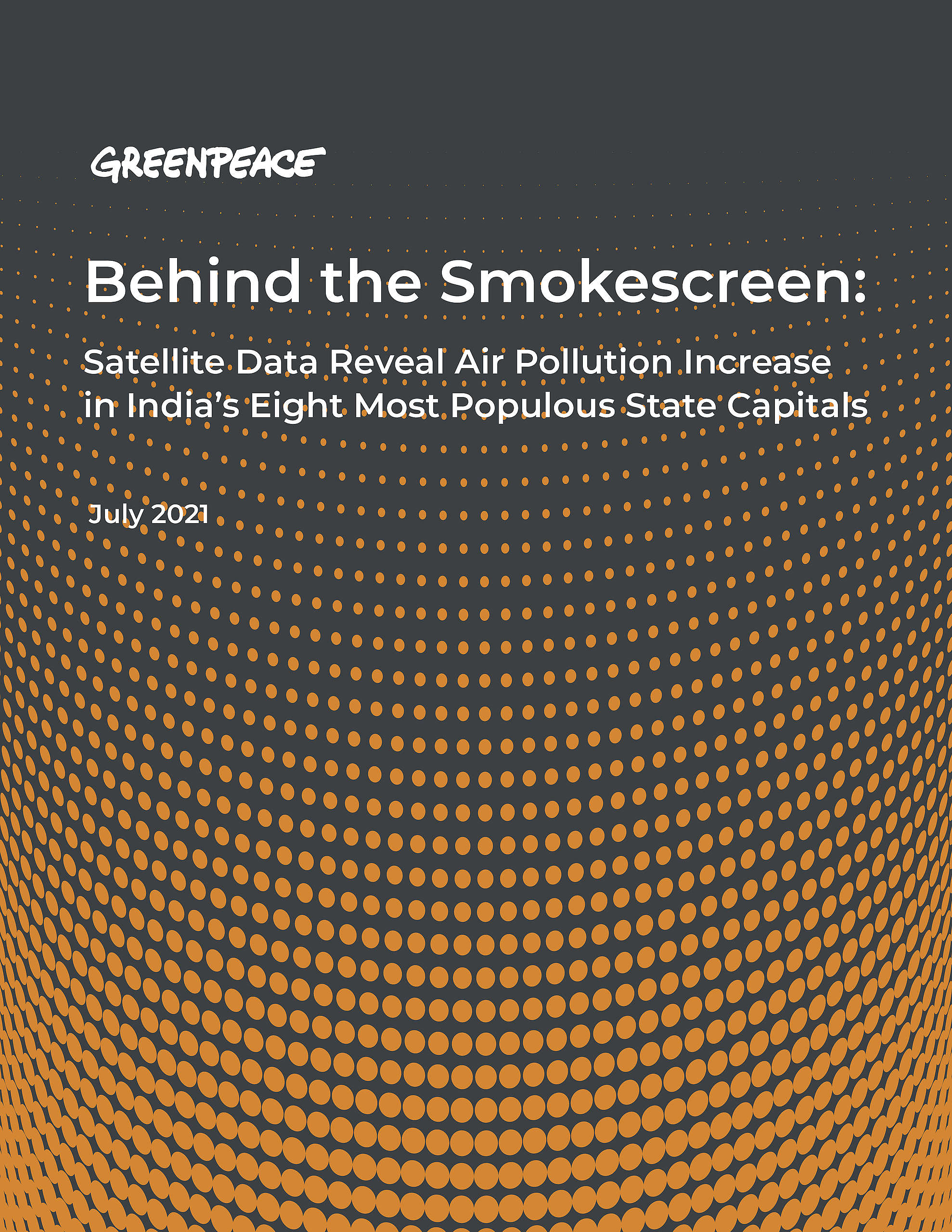Historical ambient air quality monitoring and satellite data coupled with increasing fossil fuel consumption in Delhi and adjoining states contradicts Government’s claims of 25% reduction in pollution levels over past years
New Delhi, November 7: A new analysis by Greenpeace India reveals that the air pollution levels in Delhi did not drop by 25% over the past years as claimed by the Delhi government. Greenpeace India and Air visual report earlier in March this year, clearly stated Delhi to be the most polluted capital in the world. Recently, the Delhi government and Ministry for Environment and Climate Change has initiated multiple discussions about improvements in air quality in Delhi with different datasets. However various critiques have repeatedly demanded for transparency in the methodology and asked questions on how did the 25% improvement figure was arrived at.
The data from all real time air quality monitoring stations collectively shows a significant reduction in PM10, but no noticeable reduction in levels of PM2.5 – the most dangerous type of air pollution.The dataset also showed an increase in NO2 levels over the period. Satellite data shows no statistically significant reduction in PM2.5 levels over the period from 2013 to 2018 and only shows slight reductions in later part of 2018 compared to the past 3 years.
PM10 data at manual air quality monitoring stations operated by CPCB under National Ambient Air Quality Monitoring Programme (NAMP) on the contrary shows higher PM10 levels in 2018 compared to 2013,2014 and 2015.
Avinash Chanchal from Greenpeace India said, “The actions which have been taken and implemented to reduce air pollution in Delhi be it the Bypass roads, shutting down of Badarpur Power plants, shifting the industries to PNG and availability of BS VI fuel were taken in mid/end 2018 and these steps along with others will surely result in reduction of pollution levels on an annual average basis, but the majority of impacts of such steps collectively was not seen till 2018 and these wouldn’t be enough to provide breathable air quality.”
It is noticeable that Delhi and the two upwind states, Haryana and Punjab saw an increase in coal consumption by 17.8% from FY 2015-16 to 2018-19. On the other hand, total petroleum product consumption increased by 3.3% over the same period, both contributing to increasing emissions and complicated clean air efforts.
Avinash Chanchal also emphasised,“The trends in PM10, PM2.5 and NO2 levels indicate that emissions from biomass burning (Household and agricultural) were falling while emissions from fossil fuel burning are increasing in the region. 31 out of 33 coal fired electric generation units do not have even Fuel Gas Desulphurization (FGD) installed to reduce SO2 emissions as mandated by MoEF&CC. These had to be installed by December 2017 initially and by December 2019 as per the second timeline given by Ministry of Power and MOEF&CC as submission to Supreme Court in an ongoing case. Furthermore, there is a systematic attempt by MoEFCC and Ministry of Power to dilute the NOx standards. ”
“When NCAP clearly lays out the base year 2017 to which air quality improvements should be compared to, it’s a futile and confusing exercise to compare air quality situations with other dates or series of years. We apprehend that such comparisons are made to create a false narrative among the public. Given that Delhi and the Indo-Gangetic Plain are equally polluted by very similar sources throughout the year, any improvement in air quality should reflect at a regional level and be measured against the annual and 24 hours average of the base year of 2017,” added Avinash Chanchal.
For further media queries, please contact:
Rohin Kumar, 9013971997, [email protected]



